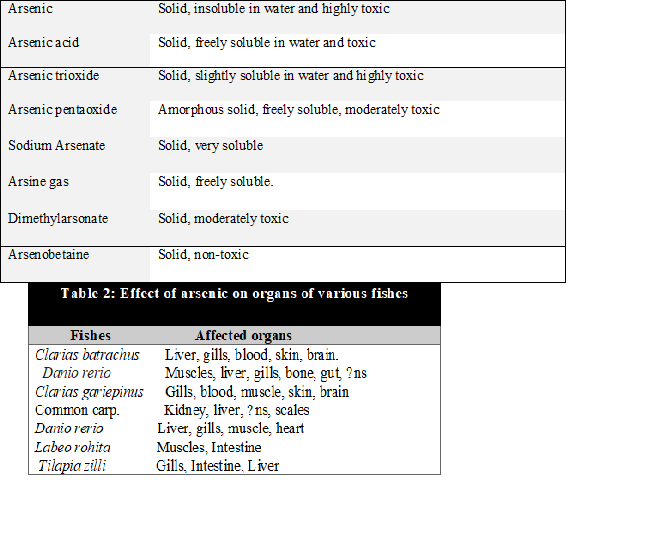Hazardous Effects of Arsenic Contaminated Water on the Biological Characteristics of Fishes: A Review
Abstract
 Abstract Views: 266
Abstract Views: 266
The aim of the current review is to deliberate on arsenic chemistry, its existence in aquatic ecosystem and its effects on the biological systems of fishes which are regarded as potential indicators for any change in water quality. Water is a major storehouse of arsenic which is present in the form of arsenate and arsenite. Anthropogenic activities including unlimited application of arsenic pesticides, industrial activities and mining operations have increased the universal incidence of soluble arsenic above tolerable levels of 0.010 mg/L. Variations in fish behaviour, growth rate, haematological and biological parameters and organ systems have been observed in arsenic contaminated water. Data regarding these parameters indicate that the fish shows aggressive behaviour and its weight increases due to a high arsenic uptake. The production rate of biochemical compounds like carbohydrates, proteins and lipids is reduced due to arsenic bonding with their precursors. Among organ systems, skin is a highly affected organ, while muscles are the least affected due to high arsenic concentration. Low concentration of arsenic results in bioaccumulation, conspicuously in liver and kidney, upon incessant exposure to freshwater fish. This bioaccumulation turns into biomagnification and becomes the cause of lethal diseases in human beings, such as hyperglycaemia, diminution of enzymatic activities and immune system abnormalities. Keeping in view all of these above mentioned facts, it is imperative to take action against excessive arsenic usage and to develop its eco-friendly management ways.
Downloads

Copyright (c) 2019 Maimoona Kanwal, Mubashar Hussain, Waqar Younus

This work is licensed under a Creative Commons Attribution 4.0 International License.
BSR follows an open-access publishing policy and full text of all published articles is available free, immediately upon publication of an issue. The journal’s contents are published and distributed under the terms of the Creative Commons Attribution 4.0 International (CC-BY 4.0) license. Thus, the work submitted to the journal implies that it is original, unpublished work of the authors (neither published previously nor accepted/under consideration for publication elsewhere). On acceptance of a manuscript for publication, a corresponding author on the behalf of all co-authors of the manuscript will sign and submit a completed the Copyright and Author Consent Form.









